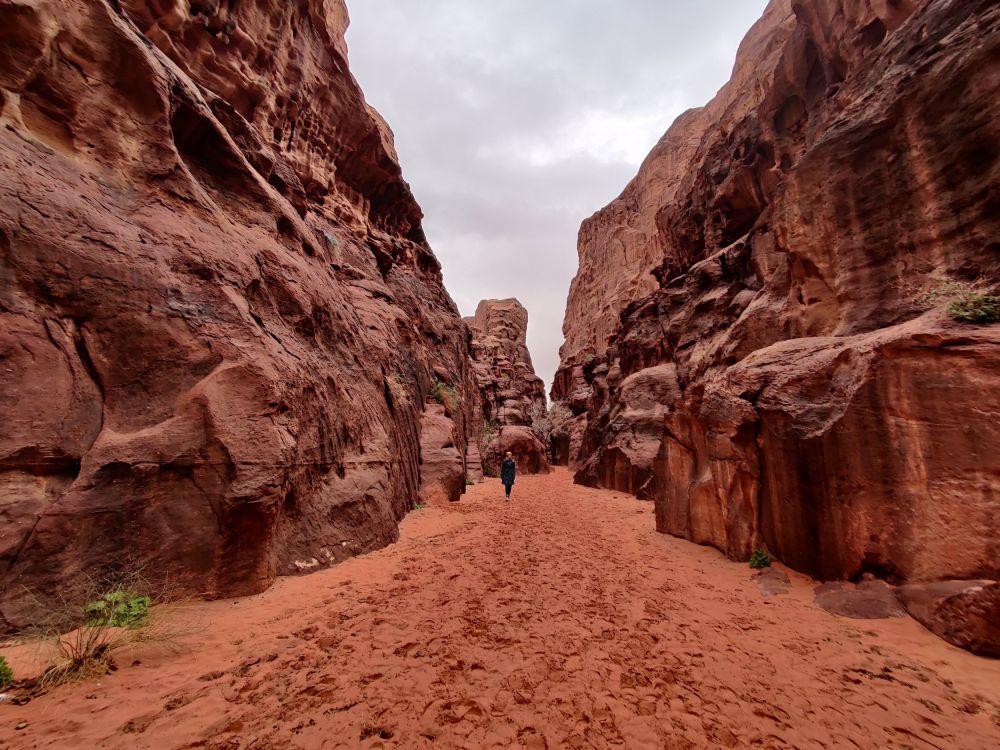

Wadi Rum, also known as the Valley of the Moon, is a stunning desert wilderness in the south of Jordan. It has captivated visitors for centuries. Among the myriad natural wonders within Wadi Rum is Khazali Canyon, a narrow fissure in the mountainous landscape that holds a treasure trove of ancient petroglyphs and inscriptions.
The history of tourism at Khazali Canyon can be traced back to the times when the Nabataeans used the area for incense trade routes, leaving behind rock paintings and inscriptions. These artifacts provide evidence that the canyon held spiritual significance to these early inhabitants. The site was later known to the local Bedouin people, but it remained largely unknown to the outside world until the early 20th century.
Tourism began to develop in the broader Wadi Rum region during the Great Arab Revolt of 1917-1918, when British Army Officer T.E. Lawrence passed through the area. The writings and exploits of Lawrence, later immortalised in the film "Lawrence of Arabia," brought Wadi Rum and landmarks like Khazali Canyon to the attention of tourists and adventurers.
In 2011, Wadi Rum was inscribed as a UNESCO World Heritage Site, a status that recognized the area's natural and cultural significance. This recognition has since positioned Khazali Canyon as a must-visit destination within Wadi Rum for its historical petroglyphs, which include drawings of humans, animals, and inscriptions in different ancient languages.
With the growing interest in adventure tourism and sustainable travel practices, Wadi Rum, and by extension, Khazali Canyon, have seen a change in tourist demographics and activities. Visitors now engage in rock climbing, hiking, camel safaris, and even hot air balloon rides that provide a stunning view of the canyon from above. The region's Bedouin community has actively participated in developing ecotourism, capitalizing on the interest in traditional Bedouin culture and ensuring the preservation of their natural heritage.
The latest trend in Wadi Rum tourism focuses on immersive cultural experiences, where tourists can stay in Bedouin campsites, enjoy local cuisine, and learn about traditional ways of life. Additionally, there is a push towards luxury eco-lodges that offer comfort while minimizing environmental impact. The use of technology, such as virtual reality tours and mobile apps, is also gaining traction to enhance the visitor experience at natural and historical sites like Khazali Canyon.
Despite its appeal, tourism in Khazali Canyon faces challenges such as environmental concerns and the need for sustainable management to prevent damage to the delicate petroglyphs and natural landscape. Authorities and local communities continue to work together to balance tourism growth with conservation efforts.
Looking forward, Khazali Canyon is expected to remain a highlight for tourists visiting Jordan. With the growing interest in authentic travel experiences, its historical and natural significance ensures that it will continue to be treasured by future generations of travelers.